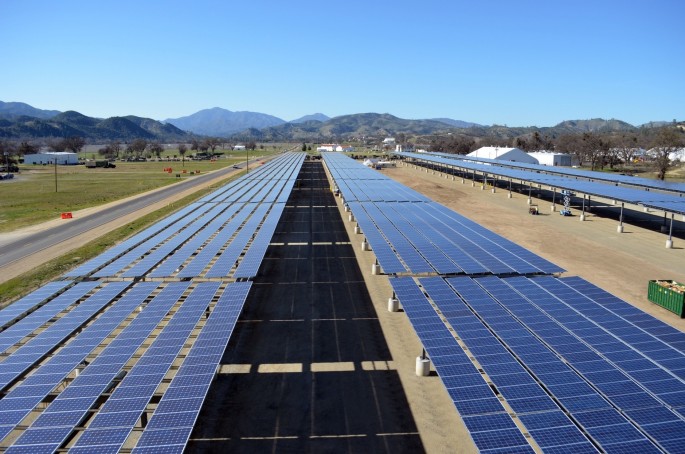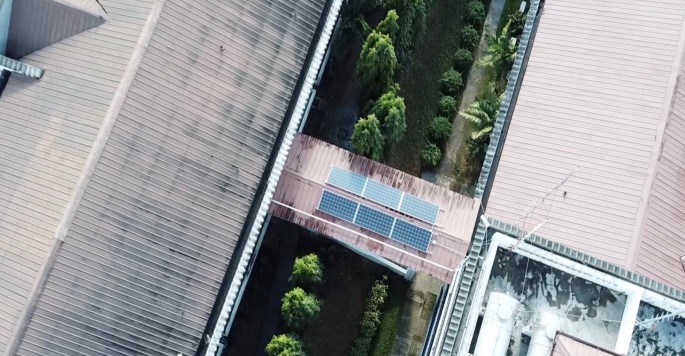-
The Blockchain Revolution: Q&A with Kaikai Yang
May 3, 2018 By Qinqi Dai
Blockchain, the newest technology poised to revolutionize numerous industries, could help decentralize electricity systems across Asia, Europe, Australia and the United States. In Brooklyn, peer-to-peer microgrids allow prosumers—energy consumers who generate small amounts of electricity from renewable sources—to trade energy with other users. Blockchain technology provides distributed ledgers that validate, record, and share each transaction, using smart contracts that automatically execute energy trades when the price and volume of the electricity transaction meet the contracted requirements.
Energo Labs, a Shanghai-based start-up, is bringing a decentralized solar microgrid to communities in Southeast Asia that goes a step beyond the peer-to-peer microgrid by incorporating energy storage and electric vehicle (EV) charging stations. In March, Energo Labs launched a one-campus microgrid project in the Philippines. But whether Energo Labs is going to bring real changes in its home country, China, is still unknown. To understand the opportunities and barriers confronting microgrids and their implications for China’s electricity sector, we talked with Kaikai Yang, Energo Lab’s Chief Operating Officer.
China Environment Forum (CEF): Could you tell us about your most successful project?
Kaikai Yang (KY): Our biggest success so far is our proof of concept project in the Philippines, located at De La Salle University-Dasmariñas. It is the first campus microgrid in Asia that integrates blockchain for energy trading, saving almost 1.2 million Philippine pesos in electricity costs over its 20-year life. Embedded with a decentralized energy billing and ledger system for energy users, this microgrid connects buildings with installed solar to other non-solar buildings, so that they share access to the energy produced. It is our first proof-of-concept project to demonstrate the technical abilities and benefits of blockchain in the energy sector.

Energo Labs Manila PoC Project Buildings
CEF: What factors have led to the success of this project?
KY: Globally, more than one billion people lack access to electricity, most of whom are located in developing countries in Asia and Africa. The cost of infrastructure to connect these people to the main grid is very expensive, which is why governments and organizations often have little incentive to invest in extending a public grid. The main reason we chose the Philippines for our proof-of-concept project is that it has many off-grid areas, and the country’s three main centralized grids are often prone to damage and therefore unstable. This makes the Philippines a great location for Energo Labs to implement our technology and prove the benefits of blockchain for energy access, security, and sustainability. Currently, most countries lack clear policy or financial support for energy trading projects, but we are beginning to see a rise in the number of experts, organizations, and committees getting involved in the push towards a freer and cleaner energy sector. Companies are increasingly working together to support new business models focusing on microgrids and energy trading, boosting the support we receive in several countries.
CEF: How is your project different than Brooklyn’s blockchain-based distributed solar energy microgrid?
KY: Several microgrid projects around the world that implement blockchain focus on applications like renewable energy certificate (REC) trading and virtual transactions. Blockchain is also often used solely for energy accounting purposes that still require the grid to function as an infrastructure-based middle man to provide renewable energy. Energo’s project is the first to focuses on energy storage sharing. By creating a network of energy storage systems, we want to meet different consumers’ demands, from houses to EVs, using locally produced energy. We aim for a transparent and open energy network that uses data for description, detection, and evaluation of energy trends and policies.
CEF: Tell us more about the key blockchain technology your projects use.
KY: Energo is the first blockchain and energy project built on top of the Qtum blockchain. Qtum is much more energy efficient compared to other platforms, which fits our theme and industry perfectly.
Given how new blockchain is, the technology has several challenges, leaving room for improvement. To this end, Energo Labs is also collaborating with universities around Asia on blockchain research and development, focusing on improving transaction fees and time, the security of the Internet of Things, user experience, scalability, and overall implementation.
CEF: What are key obstacles in creating microgrids, especially in China?
KY: From a policy perspective, it is often difficult to have innovation in the energy sector because of the traditional energy structure, in which only a few stakeholders are involved in generation, transmission, distribution, and retail. Lobbying governments is a challenge for many energy start-ups. Our strategy is to partner with government representatives to both help them understand the value of blockchain in the energy sector and help us grow.
Apart from policy obstacles, China and several other Asian countries also face economic and infrastructure barriers that hinder the growth of the microgrid market. China’s electricity is very cheap; at less than 0.01 USD per kWh, it is very hard to convince users to invest in solar and storage hardware for energy trading. Moreover, big cities like Beijing, Shanghai, and Guangzhou are dominated by skyscrapers, limiting consumers’ ability to own solar panels.
CEF: Can your success with energy blockchain in Southeast Asia translate to China?
KY: All of our target markets have different characteristics, so our solution must be modified to fit the country and project. While we are currently focusing on Southeast Asia, we would like to apply these lessons to push energy decentralization in China.
Even though we are not directly targeting the Chinese energy market at this stage, we are working with government representatives and companies to explain the problems we are solving. Renewable energy surplus is a serious problem confronting Northern China, and we hope to eventually provide a model encouraging residents to consume locally produced renewable energy, rather than transport it to China’s eastern cities and incur high transmission fees.
Our current focus in China is machine-to-machine energy transactions through renewable energy powered EVs. Given the country’s lead in the EV market, we believe that this will be the future of mobility, and there is a need to align EV charging with renewable energy. We aim to have a unified energy sharing system prioritizing clean and green charging for vehicles.
Qinqi Dai is a research assistant with China Environment Forum. This interview blog is part of her final graduate group capstone project at Carnegie Mellon University, “Blockchain for International Development.”
Sources: Deloitte, Energo Labs, Forbes, LO3Energy, New Security Beat, PwC, QTUM, The Manila Times, World Bank.
Photo Credit: Solar project at Fort Hunter Liggett, courtesy of U.S. Army Corps of Engineers. Manila PoC Project Buildings, courtesy of Energo Labs.
 A Publication of the Stimson Center.
A Publication of the Stimson Center.




